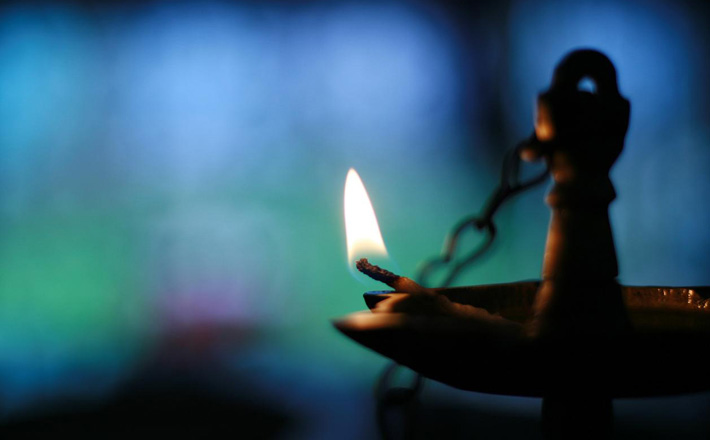Commentary on Isaiah 1:1, 10-20
With its stunning poetry, inspiring call for justice, and complex portrayal of God, Isaiah 1 is one of the most memorable chapters of biblical prophetic literature.
The excerpt from this chapter in the lectionary includes a polemic against unacceptable worship (vv. 10-17) and an offer of divine forgiveness (vv. 18-20). Both sections have the potential to inspire rich ethical and theological reflection.
The Larger Context
Themes from Isaiah 1 appear repeatedly in later chapters of Isaiah, including the fate of Jerusalem, the nature of proper worship, and the necessity of repentance. Many scholars think that Isaiah 1 was put together to introduce the book as whole, with v. 1 functioning as a kind of title. The chapter is the beginning of a conversation, not necessarily the last word.
Although there is disagreement over the chapter’s structure, there are good reasons to view vv. 2-20 as a single poem, which begins and ends with similar phrases (“for the Lord/the mouth of the Lord has spoken”) and is loosely held together by animal and food imagery.1 Because the lectionary leaves out the first half of the poem, the reading loses some rhetorical punch. For example, the survivors of an invasion of Jerusalem assert that they are not like Sodom and Gomorrah in v. 9; v. 10 contradicts their claim by calling them “rulers of Sodom” and “people of Gomorrah.” When preaching on vv. 10-20, it might be helpful to summarize the earlier verses, noting the portrayal of the people of Judah as rebellious and God’s disappointment at their rejection.
Worship and Justice
Throughout Isaiah 1:11–15, God emphatically rejects the people’s worship. According to v. 11, God has “had enough” of their animal sacrifices; the verb might better be translated “gorged out.” Similarly, the phrase translated “my soul hates” in v. 14 could be an idiom for nausea.2 God even threatens not to look at worshipers in v. 15. This bombastic language may surprise readers who expect the Bible to conform to popular standards of decorum, but it is typical of prophetic literature. As depicted by Isaiah, God is passionate and emotionally demonstrative, rather than detached and reserved. The passage also emphasizes divine freedom. God does not need human worship and cannot be manipulated through it
The claim that God rejects these acts of worship would have been scandalous. They are all sanctioned or even commanded in the Torah. A contemporary audience might appreciate analogies to familiar worship practices, but one should stress that these are only partial analogies. It is unlikely that Isaiah intended to discredit the practices themselves. Instead, the poem makes shocking, even absurd claims as a rhetorical strategy to capture the audience’s attention.3 The actual objects of critique are the people’s excessive religiosity and ethical failures, as made clear by a clever wordplay in v. 15. “Hands … full of blood” refers to acts of violence against innocent persons (compare Genesis 4:11; Deuteronomy 21:7; Proverbs 6:17), but it also echoes the phrase “blood of bulls” earlier in the poem (Isaiah 1:11). The fact that worshipers have both kinds of blood on their hands is the problem! For these reasons, one should avoid using this text to dismiss forms of worship that one deems excessively ritualistic, or to make negative, sweeping claims about ancient or modern Judaism.
Verses 16-17 emphasize that God’s demands are not limited to worship but also entail specific social expectations. This perspective may seem counter-cultural for some contemporary readers, who view religion as a private matter separate from other parts of life. Although texts like Isaiah 58:2-7 or Amos 5:21-25 make similar claims, this point is not limited to prophetic literature. Along with its well-known worship regulations, the Torah also includes commands to protect vulnerable classes of people, with similar language to Isaiah 1 (e.g., Exodus 22:21-27; Deuteronomy 24:17-22).
God’s commitment to God’s people
From beginning to end, Isaiah 1:2-20 depicts a severely fractured relationship between God and the citizens of Jerusalem. The final verses propose conditions for its restoration. Verse 18 offers reassurance that the people’s sins can be forgiven, despite their severity. The association between sin and the color red recalls v. 15, which charged the people with having bloody hands from their violent actions. In the second half of v. 18, NRSV “shall be like snow/become like wool” suggests that forgiveness is certain, but “may” is another possible translation. This rendering would be more consistent with vv. 19-20, in which the people’s fate depends on their response to God’s offer. The starkness of the decision is highlighted by another wordplay: depending on their choice, the people will either “eat the good of the land” or “be eaten by the sword” (NRSV “be devoured”).
This open-ended conclusion enables the poem to transcend its likely historical context in eighth-century BCE Judah, and its direct address (“you, your”) invites contemporary audiences into its world. Do we, too, enthusiastically worship God but fail to oppose injustice? Does our complicity in oppression give the lie to our prayer that God’s kingdom will come? Despite its stinging words of indictment, however, this text ultimately offers good news. Human frailty and failure need not have the final say. God remains committed to God’s people, even in the face of repeated rejection by them.
Notes:
1 For an extended reading of this poem, see J. Blake Couey, Reading the Poetry of First Isaiah: The Most Perfect Model of the Prophetic Poetry (Oxford: Oxford University Press, 2015), 186–200.
2 Luis Alonso Schökel, A Manual of Hebrew Poetics, Subsidia Biblica 11 (Rome: Pontifical Biblical Institute, 1988), 103
3 Brian D. Bibb, “The Prophetic Critique of Ritual in Old Testament Theology,” in The Priests in the Prophets: The Portrayal of Priests, Prophets and Other Religious Specialists in the Latter Prophets, ed. Lester L. Grabbe and Alice Ogden Bellis, Journal for the Study of the Old Testament Supplement Series 408 (London: T&T Clark, 2004), 34–47.


August 7, 2016